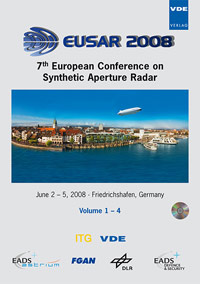A Review of Point Target Spectra for Bistatic SAR Processing
Konferenz: EUSAR 2008 - 7th European Conference on Synthetic Aperture Radar
02.06.2008 - 05.06.2008 in Friedrichshafen, Germany
Tagungsband: EUSAR 2008
Seiten: 4Sprache: EnglischTyp: PDF
Persönliche VDE-Mitglieder erhalten auf diesen Artikel 10% Rabatt
Autoren:
Neo, Yewlam (DSO National Labs. at Singapore, Singapore)
Wong, Frank (MacDonald Dettwiler and Associates at Richmond, British Columbia, Canada)
Cumming, Ian (The University of British Columbia at Vancouver, British Columbia, Canada)
Inhalt:
Bistatic SAR data are more complicated to process than monostatic data because of the versatile sensor geometry and the non-stationary properties of the received data. Recent approaches to the processing of bistatic SAR data have revolved around finding an accurate representation of the two-dimensional spectrum for a point target. In this paper, we review past methods of obtaining the spectrum, then present a new method based on a power series. We then establish the relationship between three independently-derived bistatic point target spectra. The first spectrum is Loffeld’s Bistatic Formula (LBF), which consists of a quasi-monostatic phase term and a bistatic phase term. The second spectrum makes use of Rocca’s smile operator, which transforms bistatic data in a defined configuration to a monostatic equivalent. The third spectrum is derived using the method of series reversion (MSR). Simulations are performed to illustrate the focusing accuracies of each form of the spectrum.


